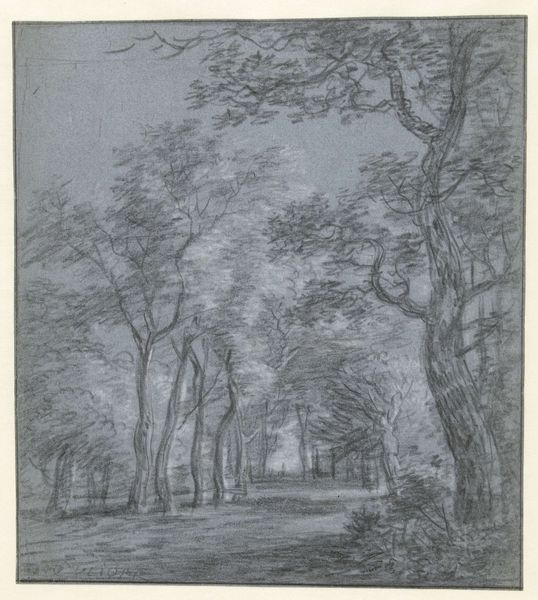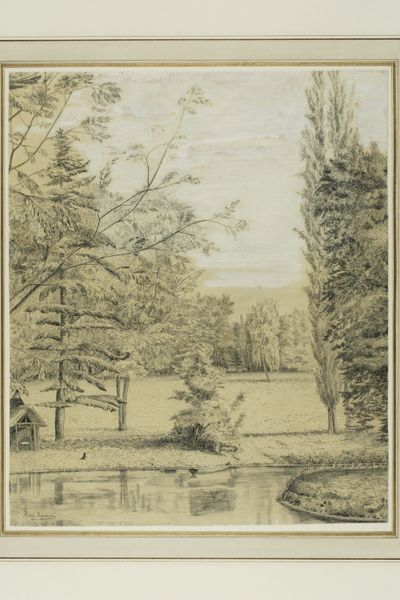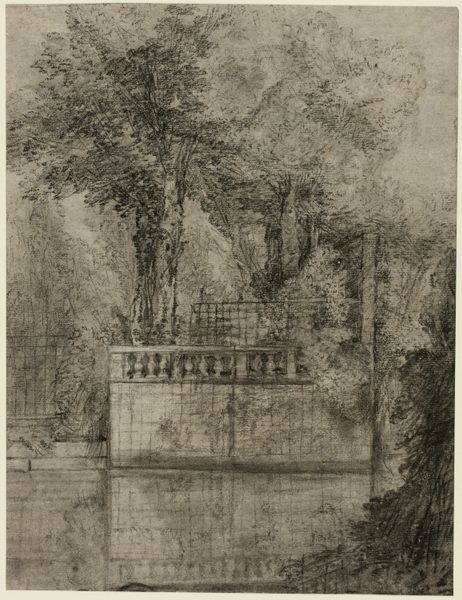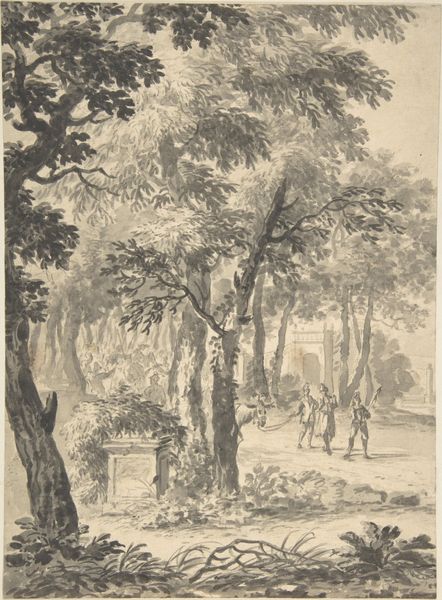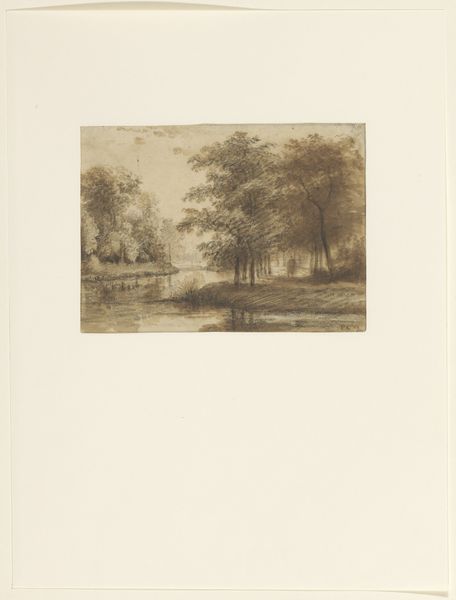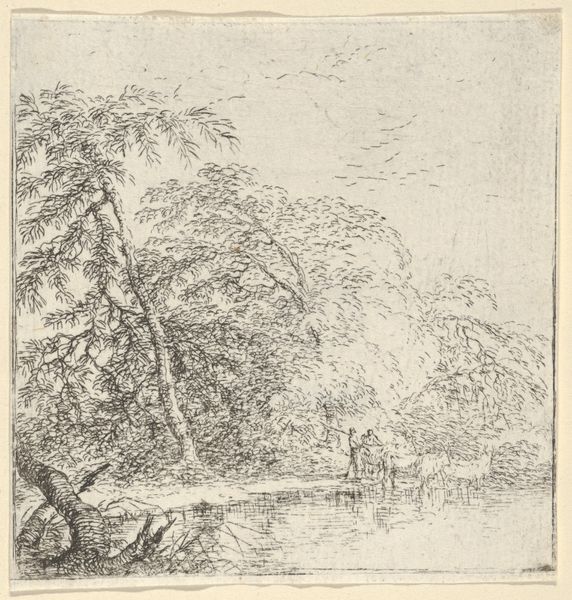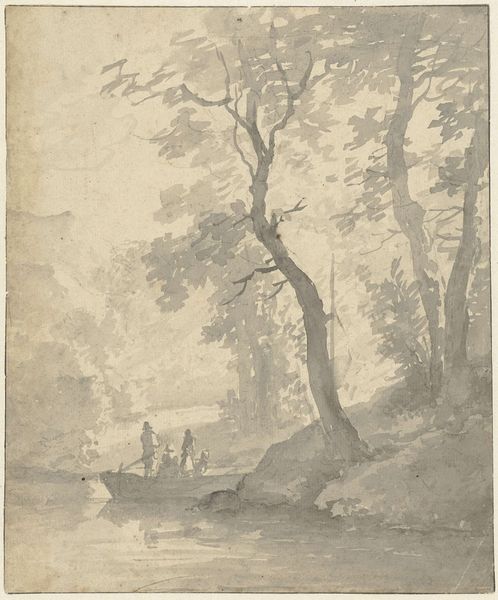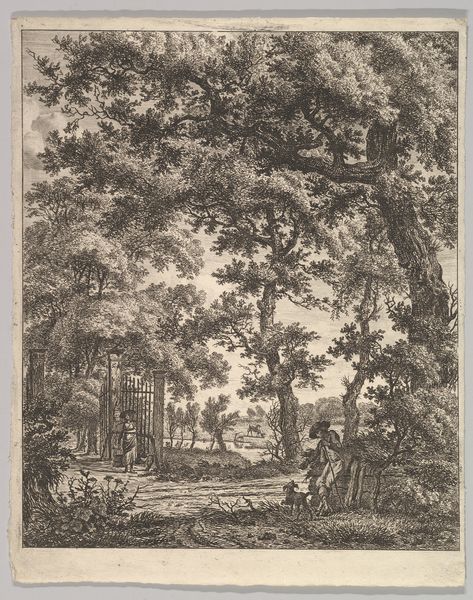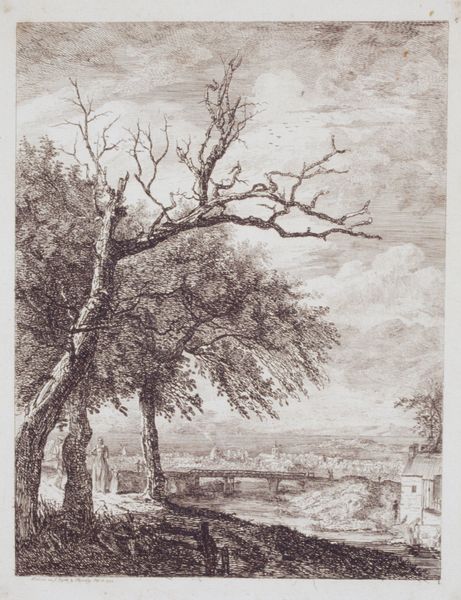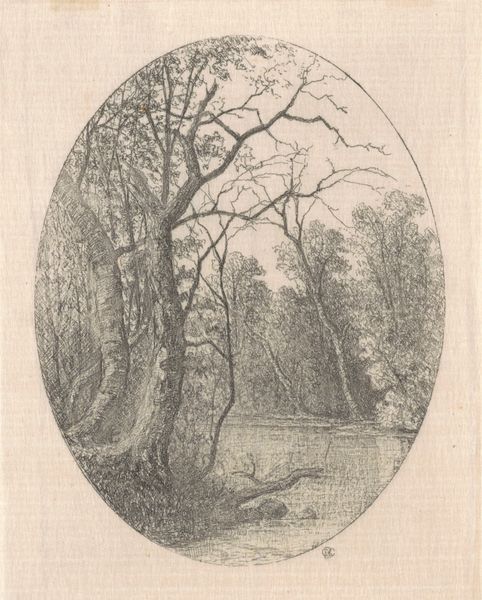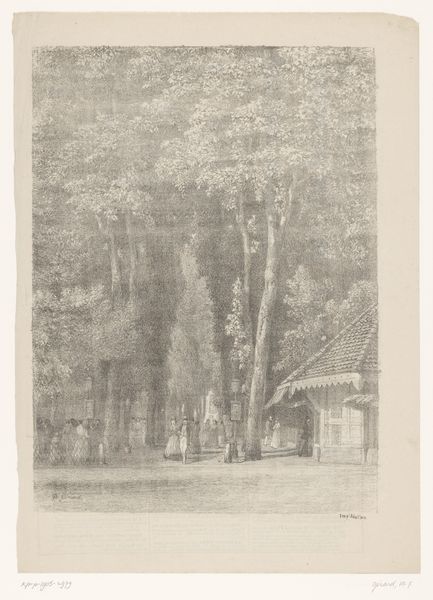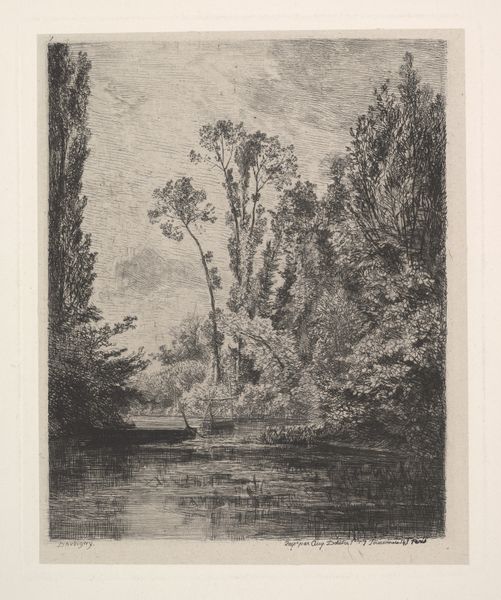
Landscape (A Grove of Trees Standing Near a River) 1828 - 1867
0:00
0:00
drawing, print, pencil, graphite
#
tree
#
drawing
# print
#
pencil sketch
#
landscape
#
river
#
etching
#
romanticism
#
pencil
#
graphite
Dimensions: 7 3/8 x 6 in. (18.7 x 15.2 cm)
Copyright: Public Domain
Editor: This is Théodore Rousseau’s "Landscape (A Grove of Trees Standing Near a River)," made sometime between 1828 and 1867, using pencil and graphite. There’s a certain quietness to it; what strikes you most about this landscape? Curator: What interests me is how Rousseau uses a seemingly tranquil scene to, perhaps subconsciously, engage with broader socio-political issues. Landscape art of this period was often deeply intertwined with ideas of national identity, ownership, and the romanticization of rural life as a reaction to industrialization. Editor: So, are you saying it's not *just* trees? Curator: Exactly. Consider who had access to these landscapes, who profited from them, and whose stories were being excluded. Think about the rise of landscape painting alongside colonial expansion. Whose land is he really depicting here, and for whom? How does the absence of figures affect that reading? Editor: That makes me consider the environmental impact as well; the forests that were decimated. Curator: Precisely. How might this idyllic scene also represent a loss, a vanishing point? It speaks to our complex relationship with nature—the desire to preserve its beauty while simultaneously exploiting its resources. What do you make of Rousseau’s detailed rendering of the trees in contrast to the more subdued background? Editor: The trees seem almost like individuals, while the background is more of an idea of a place. Maybe that points to the idea of the value of nature that you're talking about? Curator: It could suggest a tension between the specific and the general, the individual and the collective. By emphasizing certain elements, he directs our gaze and, perhaps, our thinking. These romantic depictions are always political, whether intentionally or not. Editor: That gives me a lot to think about. I always appreciated the technique, but now I have a broader understanding of its context!
Comments
No comments
Be the first to comment and join the conversation on the ultimate creative platform.
